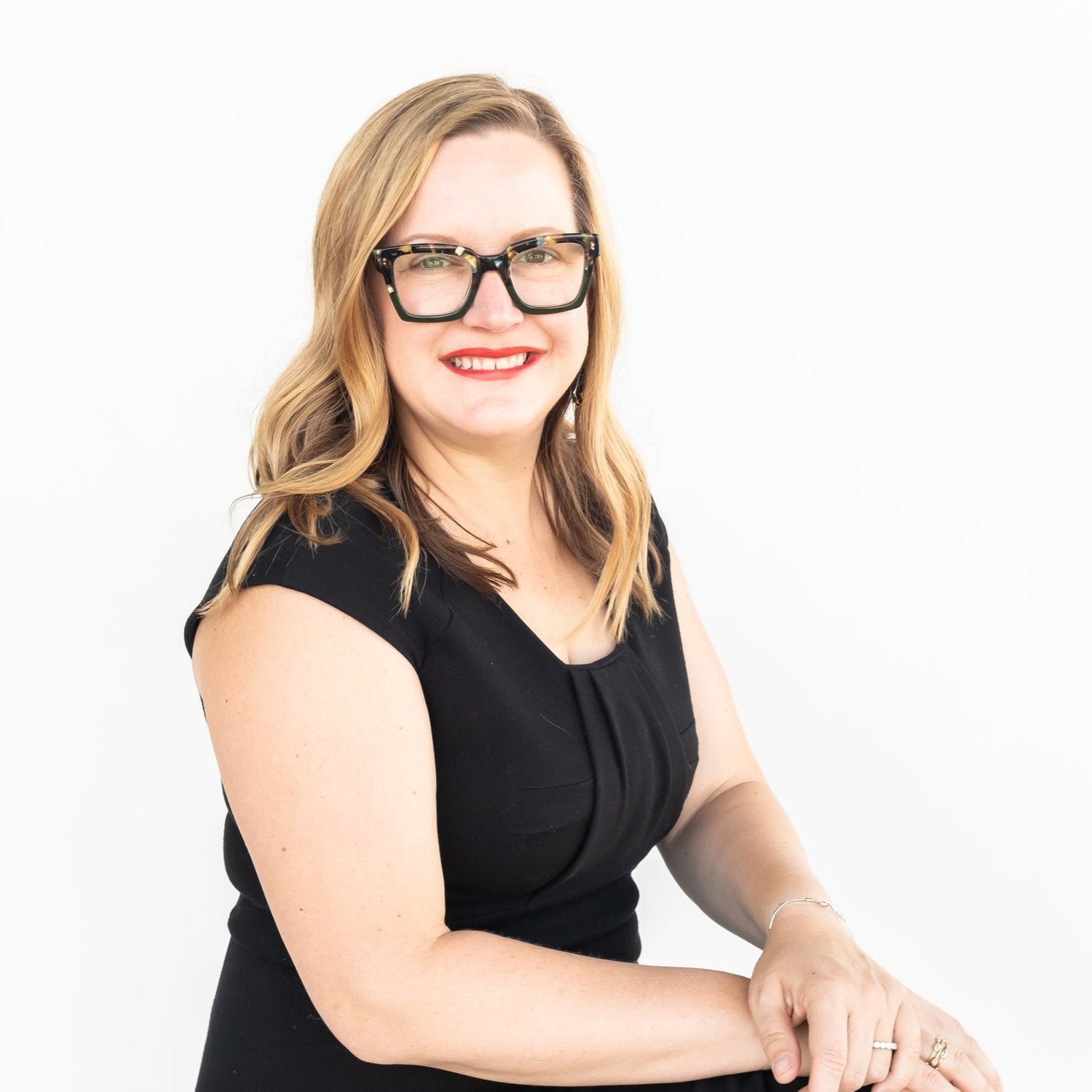The 50 States Project is a series of candid conversations with interior designers across the country about how they’ve built their businesses. This week, Tulsa-based designer Mel Bean tells us why she has no plans to move away from hourly billing, how she uses a deposit upfront to lock in a client’s budget, and why she’s building her team with freedom and flexibility top of mind.
When did you start to think of design seriously as a career?
I was premed for my first three years of college—I was all in on being a doctor. But that third year, I started to feel a lack of passion so I decided to change my major. Even then, it wasn’t super clear to me. I was going through the manual that listed all the majors at my college trying to get inspiration. That’s where I saw interior design, and I thought, “I can do that?”
I’m both creative and analytical, which helps me now that I own a design business. But as a young girl who was great at math and science, I heard early on, “You should be a doctor,” or “You should be a lawyer.” I had been going down the doctor path since high school, and in doing so, I shut out all these creative avenues. I didn’t take an art class in high school, because I had the sense that I needed to do everything to put me ahead for med school.
Did you like design right away?
When I took my first design class in college, I knew immediately that this was it. But this was before the current era of design everywhere on Instagram, or the myth of instant makeovers on HGTV. I decided that because I’d already gone so far in the wrong direction [with medicine], I needed to get exposure to design in the real world [to be sure]. I reached out to every architecture and design firm in the phone book in Tulsa. I told them, “I’ll take out the trash, I’ll water the plants, I’ll do whatever.” I ultimately got a position at an interior design firm with a small showroom, and I did all those things—I watered the plants and took out the trash. But bit by bit, I started helping in the showroom, where I learned about the product and inventory side of the business and gained familiarity with vendors, which are all things that you don’t learn in school.
Where did you go from there?
My school’s program required you to do an official internship somewhere you’d never worked, so I did another internship at another residential firm. It was very different—they had a very cool Italian modern showroom and furnishings. The firm where I did my first internship was much more traditional and transitional, and this was much more contemporary, and I learned a lot.
What was your path to starting your own firm?
Once I graduated, I ended up working at an architecture and design firm for about six years before launching my own business. But there was a point when I realized that working for someone else didn’t offer the same freedom [as working for myself]. When I started the business, I had 3-year-old twin boys. It was a very demanding period of my life trying to balance putting them in daycare and aftercare, combined with a sense that I really wanted to be able to pursue my creative freedom and see my own visions through. It just felt like it was time for the next chapter.
In 2011, I started my first business with a partner, Bailey Austin Bird—it was called Austin Bean Design Studio. We had a beautiful seven years of learning and growing together—it was so much fun. Along the way, our lives changed so much that we both [found ourselves looking for] the freedom and independence to take our business in a direction that better supported our individual lives. So we launched our separate firms in 2018, and my team will be celebrating the fifth year of Mel Bean Interiors in December.


What had changed that made the partnership feel less like a good fit?
I don’t want to speak for Bailey, but when we started the business, she was single and I was married with the twins. Seven years later, she was married with three boys under 3, and I was very recently divorced. Our lives had changed so much.
When I look back, we were also both so committed to being fair and equal—50-50 on everything—that [it became limiting] and we couldn’t help but kind of feel guilty if we wanted to take time off.
Feeling like you’re not showing up for your partner?
Yes, exactly. We were always really careful about that. Now I can do things and not feel that sense of guilt. It’s also about creative freedom: My business has been growing and growing, and I have about 10 ideas that I’m very seriously considering [to develop] different revenue streams. If I still had a partner and we were not perfectly aligned—which, how can two people be completely aligned on all those things?—then there would be a lot of push and pull about where we wanted to take things.
I miss working with her every day, but I also know that this was definitely the right move for us. And now, with the opportunities I’m pursuing, I feel free to follow my intuition without the same restraints that I would always respectfully and voluntarily offer a partner.
Was there a sense of security in having that partnership?
It definitely helped. We had met at the architecture firm and worked together there, then discovered that we were each thinking about starting our own thing. So rather than both of us creating all of these things from scratch, we were able to divide and conquer a lot of it. It was much more manageable, and you have someone to talk to who understands exactly what you’re feeling and experiencing. We were always really well balanced, too, because we saw things from different angles. That was beneficial for our clients, for us and for our team. But we were also aligned in that we’re very methodical and thorough and detailed and organized. We were lucky to find each other right then.
When we made the decision to launch our own firms, it was also 1,000 times easier because we had already built a successful business. It was a wholly different experience the second go-around, and knowing all the things I learned over seven years of running a business with a partner made it easier to transition.
When you launched Mel Bean Interiors, what was your initial focus?
As we transitioned from one firm to another, we amicably worked out what that would look like. Bailey had a background in architecture and mine was in interiors, so we literally divided the company into two—her team went with her, my team went with me—and started each of our businesses with projects that were continuous from Austin Bean. So I had my same awesome team members with me, and they were very invested in it—it was an exciting thing to do together.
For me, the focus was to continue doing the things that we already had going, but I also wanted to grow. I was doing a lot more projects at the time. They were good-size projects, but I wanted to get to fewer, larger projects, and to take on work that was more spread out across the country. A lot of my goals were around how to run the business, too, because I had that experience as a young working mom of not imagining that it was possible to do this job that I love, make a really good living and have flexibility to do the things that I had missed out on. I had to go back to work sooner than I would have liked to after having kids; I had to do the daycare stuff when I would have loved to have been able to pick them up. Now, especially post-pandemic, my team is in the office nine-to-five on Monday and nine-to-two on Tuesdays and Thursdays. If they take an hour during the day to go pick up their kids, they make it up in the morning or at night, but they’re trusted with enough flexibility to make it suit their life. Being able to offer that to my team was part of the dream.

How has your team expanded in these five years?
We now have a purchasing specialist who does all the pricing, purchasing and product management. Because that is their full-time job, the designers are able to take on more projects and to focus on creative work and billable hours. That’s been a great business move, but it also taps into what each person loves. I don’t think any of my designers had loved doing any of that.
Now, me? I’m about a spreadsheet. I love to review my financials in a way that most designers do not. Even so, I’ve also benefited from hiring someone who has that as their skill set—that was a game changer for the business. Kath Bones Baney was originally hired as an office manager and has grown into our director of operations. She is my second-in-command, and plays a huge part in all of our business decisions, planning, strategy and execution. A lot of my design friends were surprised that I was investing so much in a role that’s not creative. And it is an investment, but it’s also a huge support for me so that I can take our business to the next level.
What are the contours of that role, and how does it enable growth?
I work with a design coach, and I pay for Kath to join as well. She has taken over a lot of the marketing, so she coordinates working with PR agencies and our social media teams. She’s the point of contact when new clients reach out, and they go through her filter before they ever reach me. She is also part of the strategy and planning—these revenue streams that we want to explore. She’s helping do a lot of the legwork to understand what’s feasible, what’s not, what’s been done before. And whereas I am always a creative ideas person, she helps execute a lot of the things that I dream up. And that’s just scratching the surface. She wears a ton of hats.
How did you know that was the role you needed, and what did it take to get comfortable making that investment in an employee with no billable hours?
Well, I was fortunate because she was already working with me in a different role, so we already had established this trust and she’d already demonstrated her capabilities. Some of the success is also internal dynamics, too—our personalities are very compatible, and she’s great at reining me back in on things and giving me the accountability I need in a very respectful way. As far as the investment goes, it wasn’t this big, scary move from zero to X dollars, because she was already employed within Mel Bean Interiors. But the unidentifiable return on investment is that we’re able to manage so many more, and different, things with her help than what I could manage on my own. I would have stifled the growth of the firm without her. She’s able to keep big-picture things moving forward when I get consumed by the day-to-day of, like, “Oh, gosh, there’s this urgent client situation.” Sometimes, that means I don’t get to focus on the business in the way I wanted to that day, but she’s able to stay separate from that and focused on our goals for the quarter and for the year. It’s been really incredible.
Does she interact with clients after that initial outreach, or is she totally separate from those client demands that pop up?
She’s part of the onboarding with clients, and she’s in charge of touch points like sending gifts to clients, but then she does step out of it.
One of the other things that’s been amazing is that our fee invoicing—because we charge hourly—all now comes from her. I review our hours, but she manages that, which was a game changer for us, too. I’m not suited for that because I start to pick it apart.
I think that’s normal.
I think so too. I mean, every designer I know does the same thing. We care so deeply about our projects and our clients, so it’s natural. She’s able to be a little bit more black and white. And then if there are questions, they reach out to her instead of me, so she has that continued touch point of being the one talking about money throughout the project. Clients still talk to me, and to the designers about product dollars and project budget, but not fees. And then when it gets closer to the install and reveal, she becomes very heavily involved again—she helps coordinate a lot of the install, as well as the photo shoot.
And our clients all love her. She’s up front in our office, so when people walk in the front door—which is really by appointment only—it’s her that they see.
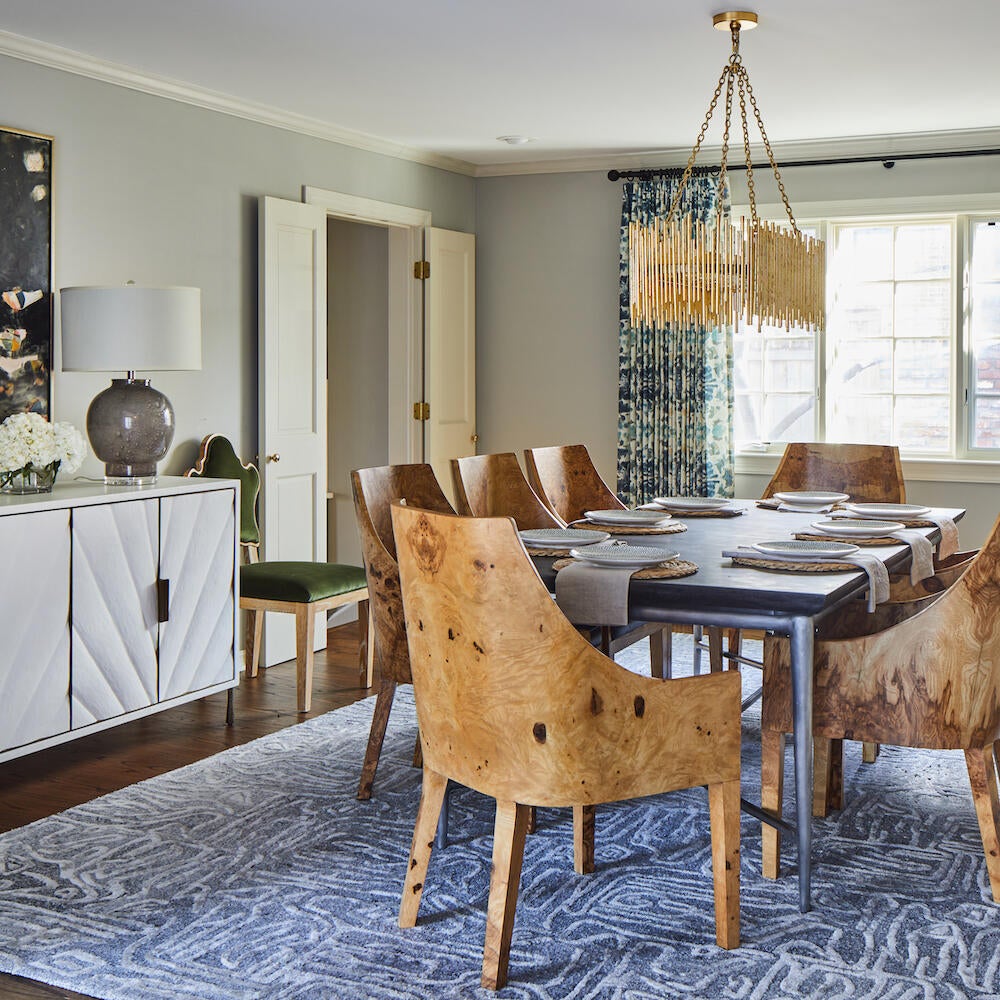

You mentioned client gifts. What is your approach to gifting for clients?
Over the last couple of years, we’ve gone deep into reviewing and updating our whole client experience and tried to define it more clearly. Instead of it being more of a, “Oh, I feel like we should send a gift today,” we now have much more structured touch points. So when a new client reaches out, for example, they have to get through the gatekeeper Kath to make sure the budget and timeline are a good fit before they ever make it to a conversation with me. Then we’ll have a meeting—in person, if possible—where we walk through how we work and our processes. At that point, we send them a little package from our favorite local bakery, Antoinette Bakery & Cafe, which makes these amazing macarons. They’re beautiful, and the packaging fits our brand really beautifully too. And when a client signs on, they get another gift—right now, that’s a Barefoot Dreams blanket, which is a super-cozy, make-you-want-to-curl-up gift. And then there are other touch points where they’ll get amazing craft chocolates. Or when we’re kicking off a construction project, we will give gift packages to the neighbors as well.
You’re sending presents to your clients’ neighbors?
It’s a candle that is handmade locally here in Tulsa. It comes in a beautiful branded box with a handwritten note card and another little graphic that has some of our photography and a little bit of info about us and our phone number. So it’s a little bit of marketing for us, but the handwritten note is basically like, “Excuse our mess, reach out if you need anything.” It helps make that little personal acknowledgment that if there’s a three-year construction project going on next to you, that is inconvenient for you, and it helps people feel seen. It’s a good marketing tool, too—and it supports the local candle company, so it’s a win-win-win.
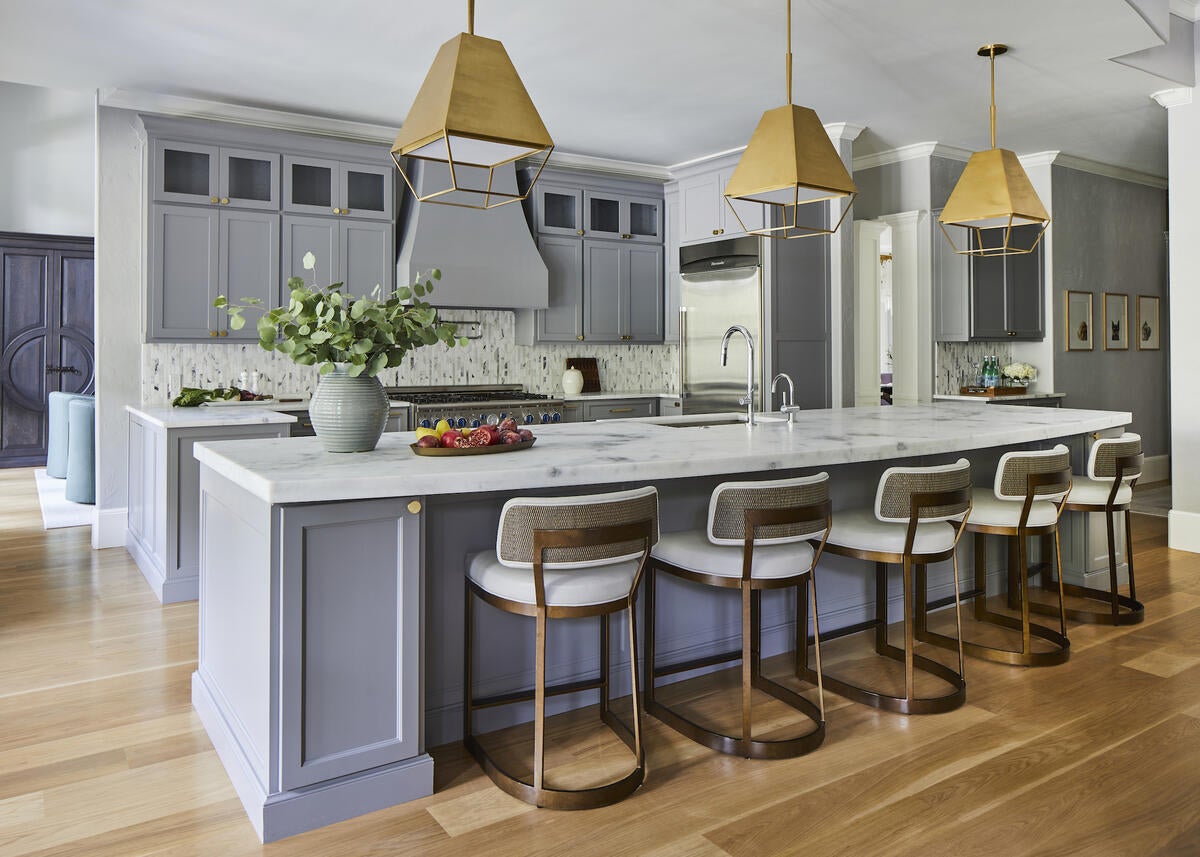
Does refining the client experience have measurable results?
Yes, in so many ways. First off, there’s way less friction in the interaction with the clients. We’ve also implemented some changes in how we present budgets, so I now create an estimated budget range with a much clearer structure to show the low and high end of our range. I had done that before, but it was very vague. Now, once they sign on, we customize the range for their specific project, and before we ever start designing, we agree on a room-by-room budget and an overall budget. We have them sign off on that and write a check for 20 percent of their overall project budget as a commitment right then.
How do clients respond to that?
We explain that we are taking on their project, which we are blocking out this much time for—and that we’re giving them that time with the understanding that they’re going to spend X dollars. With that payment, they’re committing to that—to the size of the project—rather than saying, “OK, I changed my mind, I’m not going to see that through” down the road.
We’re really clear on this point. And to be honest, our clients love that now, because they know where they stand in real time. They’re not afraid of what’s going to pop up next—like, “How much money am I going to have to cut a check for now? Are we on track? Are we off track?” It has also helped us with cash flow, and with clarity of conversation. That one conversation upfront has saved so many headaches, tough conversations and passive-aggression [down the road], which is all really just a symptom of someone feeling uncomfortable. This is all emotional, sensitive territory, and we’re entrusted with that, but this has really helped people feel more comfortable and clear.
I know you’re hourly, but how do you approach billing for the work?
I’ve always been hourly. I’ve wondered if I should do a fixed fee—but even with all these conversations, I’ve never had a project that did not add on to the scope repeatedly throughout the project. So that’s the biggest reason that we haven’t.
We bill monthly, and we try to provide a ballpark of what we think it could cost in fees for the project. It might be, “We think it will be about X dollars—but also, one of our projects that was your size was double that, and one was a little less than that, and it was because of these factors.”
For product, we do the 20 percent retainer as part of the budget sign-off. I didn’t know anybody else who was doing something like that, but it just seemed like a smart idea to me, and clients didn’t resist at all. It’s helped us to realize, “OK, if someone was reluctant about that, then maybe they’re not the right client for us.”
Where does that 20 percent deposit ultimately get applied?
Let’s say that a client agreed to a $100,000 budget. They sign off on it and they cut me a check for $20,000. Down the road, as we start purchasing for the project, they’re signing off on the very detailed proposals and then they pay in full for those items. We hold that 20 percent until the end, and then start applying it to the final 20 percent of the invoices. It really is a commitment to us. It also helps at the end of the project when they’re tired of spending money.
It almost feels free.
Exactly. It’s not as worrisome and stressful. So it hits at the right time, you know? A lot of my friends are starting to do it too and it’s really been transformative. I think it’s better for the industry too.
For me, the purpose of it is: OK, I’m taking on your project for $500,000 of fees. So if you come back to me and are like, “Actually, we’re going to cut $400,000 of that—we only want to spend $100,000 with you,” then it’s like, “Well, I turned away work that was going to be more than that to take on your project? That’s not fair.” With my approach, it’s a way to say, “How serious are you?” And to your earlier question, a lot of what I’m purchasing is at wholesale or stocking-dealer pricing. So even though I am still marking up products, it is still generally a great deal for my clients because I’m not charging full retail or over retail.
Do you still experience friction with billing? Or has that become relatively seamless?
It’s relatively seamless now.
That must feel so good.
It does. We also used to include detailed line items for all of the time we spent. But it actually just invites picking apart if we send all that detail. So now each month, it’s literally just: principal designer, this many hours at this many dollars; lead designer, this many hours at this many dollars; purchasing specialists, this many hours at this many dollars. That has helped a ton as well.
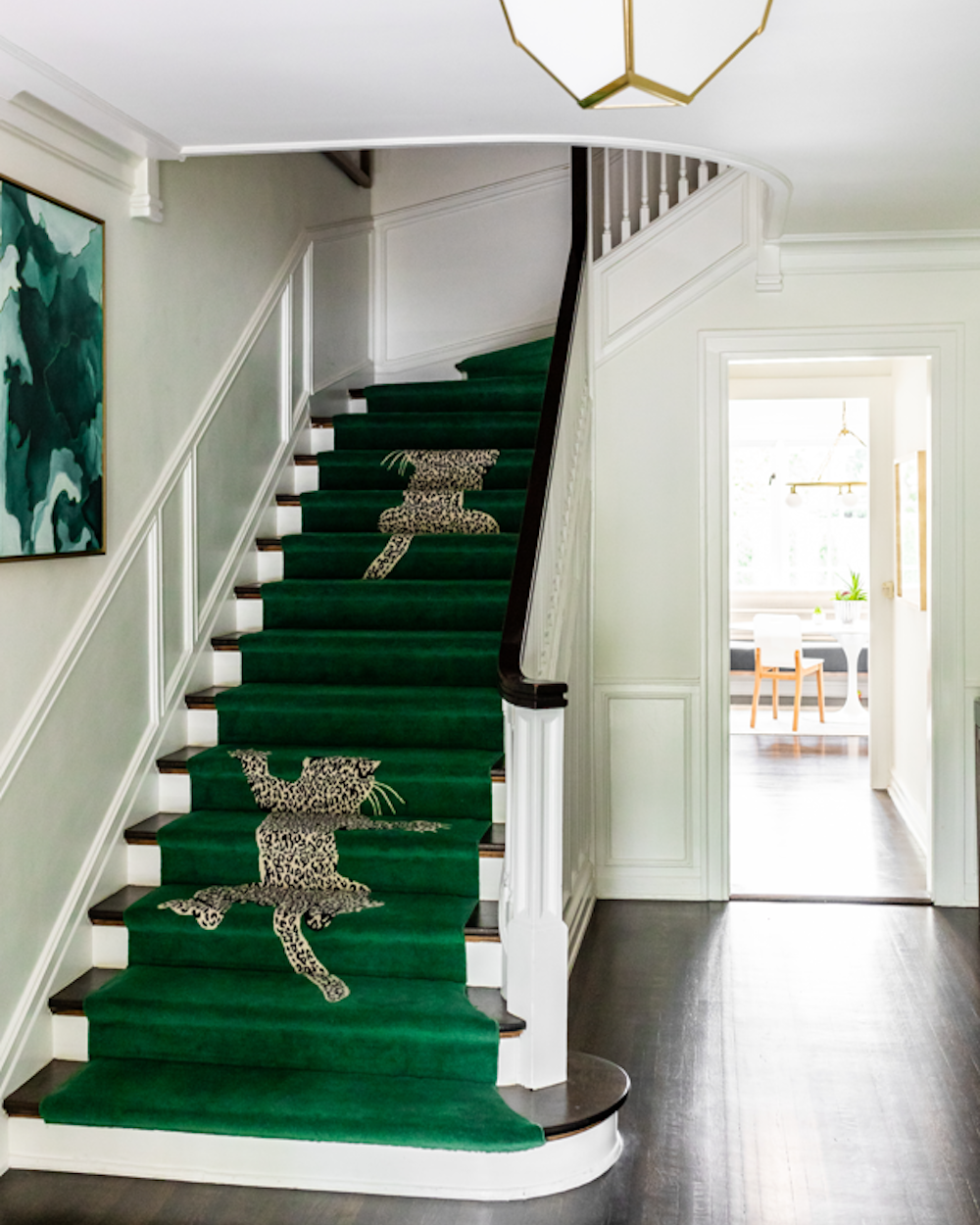

What does a full plate look like for your firm right now?
One of my lead designers just had a baby two weeks ago, so right now we are a bit short-staffed. But in general, we’ve learned a lot about how much we can each manage at a time. I have two lead designers and a junior designer who supports both of them. Ultimately one of my next hires will be another junior so that each lead designer has a team member working with them. The goal is to continue to manage more projects or larger projects with two teams that are taking on projects independently of one another. Right now, each designer has five to seven big projects, at different phases. They each have three to four that are in phases where we’re full-steam ahead.
We had an unusual situation two years ago where four major construction projects kicked off at once. Usually they’re staggered, but it happened that they all started in the same month, and they’ve all been roughly on the same trajectory. So, for example, we were ordering products at the same time rather than being staggered. It’s been interesting to see how it hits the books and how it affects our workloads. It was not ideal how all of them hit the heavy phases at the same time, but now they’re far into construction—one of them is wrapped up, one of them will install soon, another one will install in December—so they’ve started to spread out a little bit again. That definitely affects when I can start another project with each team.
How did that reshape the way you’re thinking about your workflow?
Kath has implemented what she calls “smart scheduling.” When a client signs on with us, we now map out all of the meetings we think it will take to do the design. We set the exact dates, we have it approved by the client, and we know exactly what’s going to be covered at each of those meetings. It has helped tremendously with respecting each other’s time—there’s not going to be a last-minute cancelation as easily this way because we’ve blocked it out six months in advance. It also helps because they’re not asking, “When are we going to talk about that room?” They know from the beginning what to expect and when.
It also allows us to plan our schedules. If we’ve got 10 projects going on with the firm, I am involved in these major meetings. With some clients, I have to be involved at every meeting; with others, I’m only involved in the major ones and the lead designer is running the rest. We try to do all of our client meetings on Tuesdays and Thursdays, if possible, and we do internal meetings on Mondays—my Monday is start to finish meetings with our teams. That leaves Wednesdays and Fridays to try to move things forward. I’ve found that having that structure helps everyone know what to expect and how to plan.
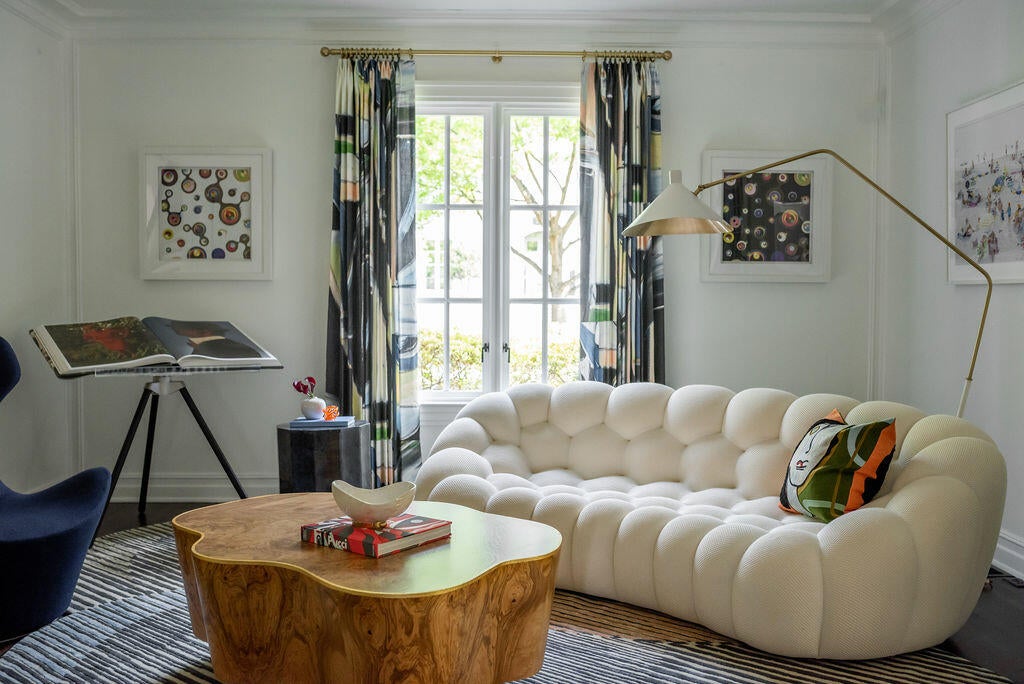
Can you tell me a little bit about the design community in Tulsa?
How much time do you have? I have kind of become an accidental advocate.
I’m originally from the Midwest, and I always get so frustrated when people are surprised that good design is happening there.
Exactly! For a lot of people, we’re a flyover state. We are not a destination. But I love Tulsa.
Tulsa was an oil boom city—they suddenly struck oil in the 1920s and it became one of the wealthiest points in the world with a ton of amazing new construction. So our downtown has incredible art deco architecture. At one point, we were called the art deco capital of the world. And for a city our size, we have a philharmonic, a symphony and world-class art institutions like the Philbrook Museum of Art and the Gilcrease Museum [for Amerian history]. Black Wall Street was here in Tulsa, though unfortunately most of it was destroyed in the Tulsa Race Massacre in 1921. But there’s a Greenwood Rising museum—Black Wall Street is called Greenwood—and there’s a restoration of that community happening. George Kaiser of the George Kaiser Family Foundation is from here, as well, and he and other groups recently created the largest privately funded park, which is called the Gathering Place. It’s not anything I would have ever imagined if you told me it was a park—look it up and see. We’re a foodie town, and we have so many great local amazing restaurants.
There’s also a really strong sense of community. We’re small enough where you bump into people you know all the time. It feels very personal and charming. I really love the nature around here as well. Where I live is what’s called green country, so hills and trees and lakes. But it often surprises people that we also have sand dunes in Oklahoma, and we have mountains—I mean, you wouldn’t call them the Rockies, but we have mountains—and a salt plane. There’s a lot of natural landscape diversity, which has lured more people from the film industry to start shooting here.
How does that impact your business, and the work that people want to do?
Well, the most direct impact that I can think of is, are you familiar with the Pioneer Woman?
Ree Drummond!
Her presence and her [Food Network] TV show has revitalized Pawhuska, Oklahoma, which is about an hour north of Tulsa. It is night and day different than it was five years ago, let alone 10 years ago. People come from all over the world specifically to see the ranch, and to see her lodge, which I helped design. They have millions of people tour it every year. They have built hotels and all kinds of things. Her presence alone has created that.
There’s also a movie coming out later this month based on the book Killers of the Flower Moon. It stars Leonardo DiCaprio and Robert De Niro—it’s based on the true story of the oil boom, how the Osage Nation became the wealthiest nation in the world, and all kinds of really awful stuff that happened around that. A lot of that was filmed in Pawhuska and Tulsa. So we’re actually drawing really large names here for that. And I have a direct connection to the film industry here, too, because my home was actually used in an upcoming film called Sick Girl starring Nina Dobrev. I just got a link to the trailer this morning, and my home was used as one of the character’s homes.
That’s amazing. Is most of the work you’re doing in those art deco–era historic homes, or how much of it is new?
There are some houses that are [from then] but a lot of the art deco architecture is evident in the downtown buildings. So yes, some projects are in historic homes, but there’s a lot more new construction. We have space here, so we can build big homes.
Where do you see the biggest opportunities as you look ahead?
This is exactly the problem that I’m facing: I can’t decide what is the best opportunity for the business itself and in alignment with what I want from the business and from my life. Because that’s key for me—I’m not just pursuing business growth at all costs. This is my time commitment, my energy commitment, and what I’m doing for my team—all of it. Some of this is really early to talk about, but one thing I want to do is create a branded Mel Bean Interiors experience: vacation homes in key places that are all experiences.
What does success look like for you?
I’ve been asking myself that same thing. I think that, like a lot of entrepreneurs, I don’t often pause and celebrate because I’m already moving on to the next goal, the next challenge or the next thing on my to-do list. So I’ve been practicing that lately—taking a moment to recognize when I accomplish something I’ve always dreamed of.
I feel like a success. I’m able to be a mom who goes to get my kids, or takes them to Europe—I have the financial means to do that, but also the freedom of time. More than that, I’m able to offer that flexibility and freedom of time to my team. Success is also a happy client, someone who is moved to tears on install day—that’s the dream moment that makes so much of our hard work worth it. There’s something super satisfying for me in being able to discern, through whatever communication a client can offer, what they really want and need, and then being able to create that for them, and sometimes they don’t even understand it until they see it all come together. There’s a magic in that.
To learn more about Mel Bean, visit her website or find her on Instagram.
Portrait: Mel Bean | Kacey Gilpin















